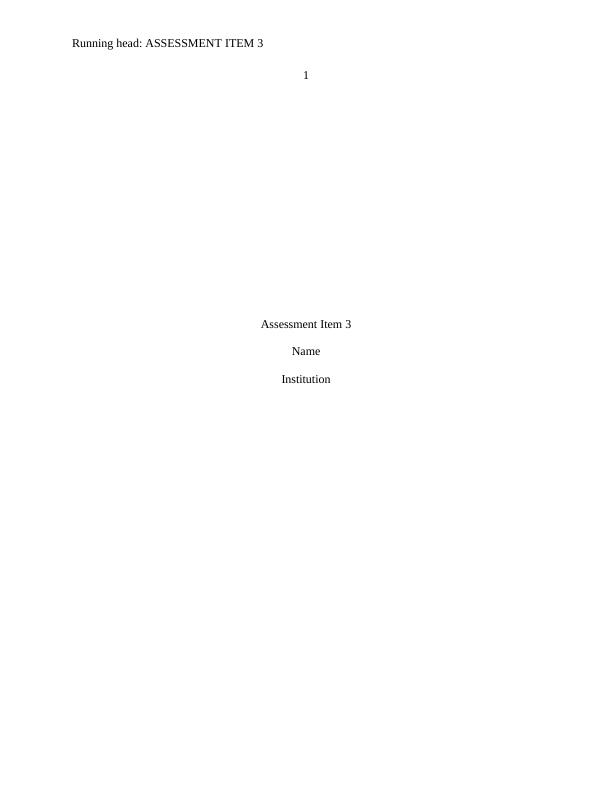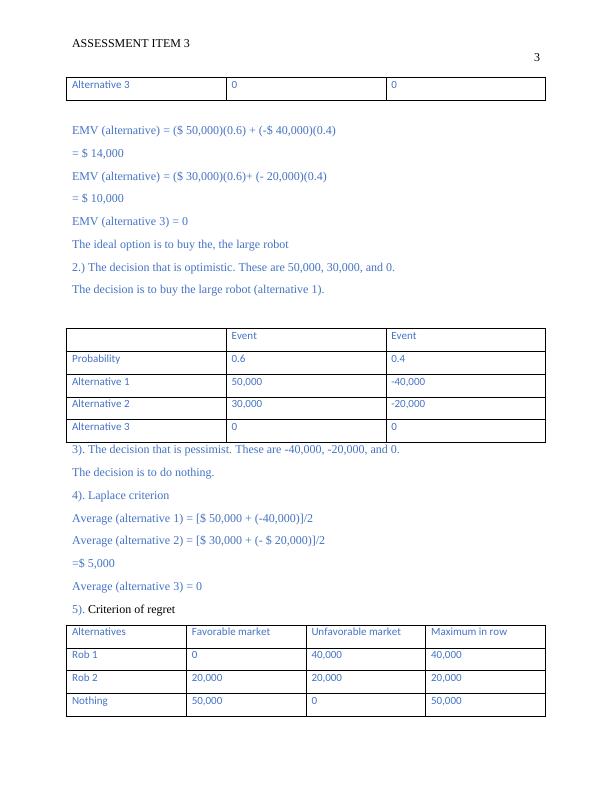Advantages of Payoff Matrix and Decision Trees
Describe the advantage in using a payoff matrix to analyse decisions, explain the steps required in developing such a matrix. Discuss the advantage of decision trees and in what situations they are preferred to a payoff matrix. Analyze the potential profit of purchasing two types of industrial robots in different market conditions.
Added on 2023-03-20
About This Document
Advantages of Payoff Matrix and Decision Trees
Describe the advantage in using a payoff matrix to analyse decisions, explain the steps required in developing such a matrix. Discuss the advantage of decision trees and in what situations they are preferred to a payoff matrix. Analyze the potential profit of purchasing two types of industrial robots in different market conditions.
Added on 2023-03-20
End of preview
Want to access all the pages? Upload your documents or become a member.




